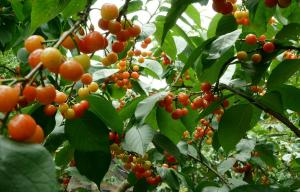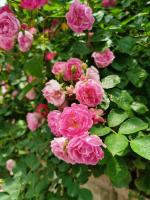How Often Should Potted Plants be Fertilized?
Potted plants require more nutrients than those grown in outdoor gardens and soil. Potted plants rely solely on the potting soil and fertilizers for nutrients; hence, it is crucial to know how often they should be fertilized. Over-fertilizing can be harmful to the plants, while under-fertilizing can lead to stunted growth, yellowing leaves, and poor fruit production. This article discusses how frequently potted plants should be fertilized.
Factors Affecting Fertilizer Frequency
Fertilizing frequency depends on several factors such as plant type, soil type, plant age, and pot size. Some plants require more fertilizer than others, while others may require none at all. For instance, succulents and cacti require minimal amounts of fertilizer. Soil type also plays a vital role in fertilizer frequency. Heavy soils such as clay soils retain more water and nutrients, thus requiring fewer fertilizers than light soils. Light soils, such as sandy soils, drain nutrients faster, thus requiring more frequent fertilizers. Plant age is also a determining factor. Young plants require more frequent fertilizers than mature plants do. Lastly, pot size also determines fertilizer frequency. Smaller pots with less soil hold fewer nutrients, requiring more frequent fertilizers than large pots filled with soil.
Frequency for Common Potted Plants
The frequency of fertilizer application depends on the type of plant. Below are some guidelines for the most common potted plants:
Herbs
Herbs such as basil, parsley, and mint require regular fertilization to maintain their pungent flavor and aroma. Fertilize the herbs every two weeks using water-soluble fertilizers.
Citrus Trees
Citrus trees require more fertilizers than other potted plants. Fertilize them monthly during the growing season and reduce the frequency to once every two months during the dormant period. Use a slow-release fertilizer to avoid fertilizer burn.
Flowering Plants
Flowering plants, such as roses and petunias, require regular fertilizers during the growing season to produce vibrant flowers. Use water-soluble fertilizers every two weeks during the growing season, and once a month during the dormant period.
Fruit Trees
Fruit trees such as figs, avocados, and citrus require regular fertilizers to produce juicy fruits. Fertilize them every month during the growing season and once every two months during the dormant period.
Conclusion
Fertilizing potted plants is essential for maintaining their health, growth, and productivity. However, over-fertilizing can lead to fertilizer burn, while under-fertilizing can result in poor growth and low yields. Therefore, understanding the plant type, soil type, plant age, and pot size is crucial in determining fertilizer frequency. Always use the recommended amount of fertilizer to avoid burning the roots.

 how many times do yo...
how many times do yo... how many planted tre...
how many planted tre... how many pine trees ...
how many pine trees ... how many pecan trees...
how many pecan trees... how many plants comp...
how many plants comp... how many plants can ...
how many plants can ... how many plants and ...
how many plants and ... how many pepper plan...
how many pepper plan...




























